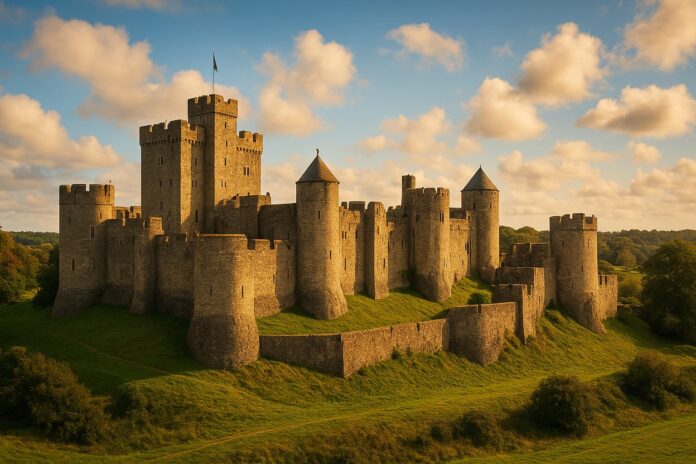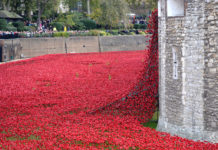England’s castles are more than ancient stone walls—they are living chronicles of kings and queens, battles and sieges, and centuries of political intrigue. From medieval fortresses guarding strategic locations to opulent royal palaces that hosted monarchs, these castles open a window into England’s rich heritage. Explore 8 historic castles that you can tour today, each with its own fascinating story and architectural marvels.
Introduction
England’s landscape is dotted with castles that have stood the test of time. These grand structures are not just relics; they are testimonies to the country’s turbulent history, from Norman conquests and medieval wars to royal extravagance and modern preservation. Touring these castles allows visitors to walk through centuries of history, explore impressive architecture, and imagine the lives of the kings, queens, knights, and nobles who once called them home.
For history enthusiasts, architects, and curious travelers alike, these castles provide an unparalleled experience. They blend the allure of legends, the grandeur of royal life, and the strategic brilliance of medieval engineering. Here are 8 historic castles in England that you can actually tour, each offering unique stories, stunning interiors, and unforgettable experiences.
1. Windsor Castle – The 1,000-Year-Old Royal Residence of British Monarchs
Located just outside London, Windsor Castle is the oldest inhabited castle in the world, with a history spanning over 1,000 years. Built by William the Conqueror in the 11th century, it has been a royal residence for generations of English monarchs, from medieval kings to Queen Elizabeth II. The castle boasts opulent State Apartments decorated with priceless artworks, St George’s Chapel where royal weddings are held, and vast grounds that stretch across 13 acres.
Historical Fact: During World War II, Windsor Castle served as a safe haven for the royal family and was used to protect the crown jewels from bombing raids in London.
Why Visit: The Changing of the Guard ceremony is a must-see, offering a spectacular display of British pageantry. Walking through the halls, visitors can appreciate the blend of medieval architecture and modern royal legacy.
2. Tower of London – The 900-Year-Old Fortress of Kings, Queens, and Prisoners
The Tower of London, founded by William the Conqueror in 1078, is one of England’s most iconic fortresses. Its history includes roles as a royal palace, treasury, armory, and infamous prison. The Tower has held prominent prisoners such as Anne Boleyn, Lady Jane Grey, and Guy Fawkes, adding intrigue to its history. Today, it houses the dazzling Crown Jewels and offers guided tours led by Yeoman Warders, who share captivating stories of betrayal, intrigue, and power struggles.
Historical Fact: The Tower also functioned as the Royal Mint for centuries, producing coins used across the kingdom and playing a crucial role in England’s economy.
Why Visit: Explore the White Tower, medieval weaponry, and the Yeoman Warders’ storytelling to experience England’s royal history firsthand. The combination of architecture, artifacts, and tales of prisoners make it a must-visit landmark.
3. Warwick Castle – The Norman Fortress Built in 1068
Warwick Castle, established shortly after the Norman Conquest, is a perfect example of medieval military architecture. It sits majestically on the banks of the River Avon and has played a central role in English history, including the Wars of the Roses under Richard Neville, the “Kingmaker.” Visitors can explore the castle’s imposing towers, grand halls, and dungeons, while live shows such as jousting tournaments, falconry displays, and interactive medieval exhibits bring history to life.
Historical Fact: During the English Civil War, Warwick Castle was held by Parliamentarian forces and later converted into a stately residence, demonstrating the castle’s evolving role through centuries.
Why Visit: The castle combines historical education with entertainment, making it ideal for families, students, and history enthusiasts. Its gardens, ramparts, and live shows offer immersive experiences for all ages.
4. Alnwick Castle – The 700-Year-Old Percy Family Fortress
Alnwick Castle in Northumberland has been home to the Percy family for more than 700 years. Originally built as a defensive fortress, it was critical in protecting England’s northern border from Scottish invasions. Today, it is famous as a filming location for the Harry Potter series and other movies. Visitors can tour the grand halls, take part in medieval activities such as archery or broomstick lessons, and explore the beautifully designed gardens.
Historical Fact: In the 14th century, Alnwick Castle’s strategic location made it a frontline defense point during border conflicts between England and Scotland.
Why Visit: The castle offers a combination of authentic history and pop culture, making it an engaging and visually stunning destination for visitors of all ages.
5. Leeds Castle – A Royal Residence Since the 9th Century
Leeds Castle, located in Kent, is often called the “loveliest castle in the world.” Its history stretches back to 857 AD, and it has been a royal residence for six medieval queens. Surrounded by tranquil moats and immaculate gardens, the castle provides a mix of history and leisure. Visitors can explore its opulent interiors, walk through the iconic maze, enjoy seasonal events like medieval banquets and falconry displays, and learn about the castle’s evolution over centuries.
Historical Fact: Leeds Castle served as a residence for Henry VIII and his first wife, Catherine of Aragon, highlighting its importance in Tudor history.
Why Visit: The castle’s combination of historical significance, breathtaking gardens, and family-friendly activities makes it a perfect day trip destination.
6. Bamburgh Castle – The 6th-Century Fortress Overlooking the North Sea
Bamburgh Castle is perched dramatically on cliffs overlooking the North Sea, offering both historical significance and stunning natural beauty. It was the seat of the Kings of Northumbria in the 6th century and has served as a defensive fortress for centuries. Visitors can tour the grand halls, exhibitions, and surrounding coastal areas, providing both a historical and scenic experience.
Historical Fact: Bamburgh Castle was besieged and captured by William the Conqueror’s forces during the Norman conquest, cementing its strategic importance in English history.
Why Visit: Its unique cliff-top location, extensive history, and breathtaking views make it a must-visit for both history enthusiasts and photographers.
7. Dover Castle – The “Key to England” Since 1066
Dover Castle, overlooking the English Channel, earned its nickname due to its strategic role in defending England from invasions. Built after the Norman Conquest, it features the Great Tower, medieval tunnels, and wartime tunnels used during World War II. Visitors can explore the castle’s ramparts, exhibitions, and tunnels while learning about its role in both medieval and modern military history.
Historical Fact: Dover Castle’s tunnels served as a command center during the Dunkirk evacuation in 1940, a critical operation in World War II.
Why Visit: Visitors experience both medieval history and modern warfare strategies, along with panoramic views of the English Channel and surrounding countryside.
8. Haddon Hall – The 12th-Century Medieval Manor House
Haddon Hall in Derbyshire is one of England’s best-preserved medieval manor houses. Unlike grand royal castles, it offers a more intimate glimpse into medieval life, complete with original period furniture, tapestries, and elegant gardens. The hall has also been featured in films and TV shows for its authentic medieval ambiance, making it a visual treat for visitors.
Historical Fact: The Manners family has owned Haddon Hall for centuries, preserving its medieval architecture and furnishings, making it one of the most authentic historic homes in England.
Why Visit: Haddon Hall provides a serene and immersive historical experience, perfect for visitors seeking a quieter, educational, and visually stunning castle tour.
FAQs About Touring Castles in England
1. Are these castles suitable for families with children?
Absolutely! Many castles, such as Warwick, Leeds, and Alnwick, offer activities that make history engaging for children, including interactive shows, medieval reenactments, treasure hunts, and themed workshops. Gardens, maze trails, and falconry demonstrations provide fun outdoor experiences for all ages. These activities not only entertain children but also educate them about English history, architecture, and culture, ensuring the entire family enjoys a memorable, enriching visit.
2. Do I need to book tickets in advance?
It is highly recommended to book tickets online, particularly for popular destinations like Windsor Castle, the Tower of London, and Warwick Castle. Booking in advance guarantees timed entry and helps visitors avoid long queues, especially during weekends, school holidays, or peak tourist seasons. Many castles also offer discounts for online bookings, guided tours, or combined packages, making planning ahead both convenient and cost-effective for an enjoyable experience.
3. Are guided tours available?
Yes, most castles provide guided or audio tours to enhance the visitor experience. For example, the Yeoman Warders at the Tower of London offer fascinating storytelling about royal intrigue, prisoners, and historical events. Smaller castles, like Haddon Hall, provide detailed guided walks highlighting architecture, family history, and medieval life. Guided tours allow visitors to gain deeper insight into the castle’s history, legends, and cultural significance, enriching the overall tour experience.
4. Can I take photographs inside the castles?
Photography policies vary depending on the castle and area. Generally, most indoor sections allow photography without flash, while certain exhibits, artworks, or private rooms may have restrictions. Outdoor areas, gardens, moats, and scenic viewpoints are usually open for photography, providing ample opportunities to capture memories. Visitors are encouraged to respect signage, avoid flash in sensitive areas, and ensure that photography does not disturb other visitors while exploring the historical and architectural beauty.
5. Are these castles wheelchair accessible?
Many castles have made significant improvements to accessibility, including ramps, elevators, and designated paths for wheelchair users. However, due to their medieval construction, some areas may remain challenging, such as staircases, narrow corridors, or uneven stone floors. Visitors planning a trip with accessibility needs should check each castle’s official website for up-to-date information, maps, and available support services, ensuring a safe, comfortable, and enjoyable visit while exploring historic interiors and gardens.
6. How long should I plan for each castle visit?
Visitors should allocate 2–4 hours per castle for a thorough experience, depending on the size and number of attractions. Larger castles like Windsor, the Tower of London, or Warwick, which include gardens, exhibitions, and live shows, may require a half-day to explore fully. Planning ahead allows time to tour interiors, climb towers, enjoy events, and wander gardens, ensuring visitors can immerse themselves in history without feeling rushed during their castle adventure.
7. Are there dining options inside or near these castles?
Yes, most castles provide on-site cafés or restaurants offering snacks, light meals, and beverages for visitors. Many castles, such as Leeds and Warwick, also feature picnic areas in gardens or scenic spots, ideal for families or groups. Nearby towns often have additional dining options, ranging from traditional English pubs to modern cafés. These facilities allow visitors to rest, enjoy local cuisine, and continue their exploration of castle grounds comfortably.
Conclusion
Exploring England’s castles is like stepping into a living history book. Each fortress, manor, or palace offers unique stories of kings, queens, battles, and everyday life spanning centuries. From the royal splendor of Windsor to the dramatic cliffs of Bamburgh, every castle invites visitors to immerse themselves in England’s heritage.
These historic castles are more than tourist destinations—they are gateways to understanding the country’s past, architecture, and culture. Visiting them offers a rich educational experience, unforgettable scenic beauty, and a tangible connection to the lives of those who shaped English history.




























